#Royal Visit Canada 2022
Photo

Also, I love the socks!
#Justin Trudeau#Prince Charles#Prime Minister Justin Trudeau#Prince of Wales#Prime Minister Trudeau#PM Justin Trudeau#PM Trudeau#HRH Prince Charles#HRH The Prince of Wales#Prime Minister of Canada#Canadian Prime Minister#Royal Visit Canada#Royal Visit Canada 2022#Platinum Jubilee#Platinum Jubilee 2022#Rideau Hall#Ottawa#Ontario#ON#Canada#Canadian Instagram#Canada Chronicles
0 notes
Text
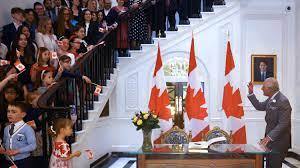
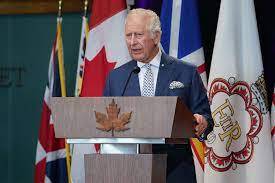
A big welcome for Charles & Camilla on Day One of their royal tour
#Prince Charles#Prince of Wales#Platinum Jubilee#Canada#Royal visit#St John's#Newfoundland#schoolchildren#2022
2 notes
·
View notes
Text
now that Charlie boy has become king here are some things you may not know about him:
- he publicly humiliated and treated Diana the Princess of Wales like utter garbage countless times while they were married, in particular this situation in 1993
- tampongate (need I say more)
- his poor treatment of Princes William and Harry during their formative years (saw an opera while William was in surgery, A+ dad behaviour)
- in 2013 he accepted a £1m donation from the family of Osama Bin Laden for one of his charities
- continues to meddle in British politics which is a big fat no-no for royals (but he doesn’t care to listen or be reminded of history, i.e, see Charles I of England), he also really wanted helicopters and kept annoying the PM over it back in 2004-2005
- he was allegedly listed in the Paradise Papers back in 2017, but the royal family denies this
- he was allegedly the one who made racist comments about the potential skin colour of Prince Harry and Meghan Markle’s son back in 2017 after his youngest son’s engagement, but he continues to deny this
- he and the Duchess of Cornwall openly LAUGHED at Inuit throat singers during a visit to Iqaluit, Canada in 2017 (it’s so abhorrent, as a Canadian this enrages me)
- in 2021 he allegedly offered “cash for honours” in relation to The Prince’s Foundation, by bribing a Saudi billionaire with knighthood and UK citizenship if he donated to his charity
- he actively supports homeopathy treatments instead of researched and effective treatments, and is often criticized as being “anti-science”
- he has a minimum net worth of $27 billion USD as of 2022 from ONE royal estate (that’s right, just from one of their many properties)
#qeii#queen elizabeth ii#royal family#charles iii#prince charles#charlie boy#end the monarchy#uk#scottish independence#welsh independence#unified ireland#parasite in chief in her idiot hat#scandals#tea#just thought you should know#links in post#controversy
777 notes
·
View notes
Text







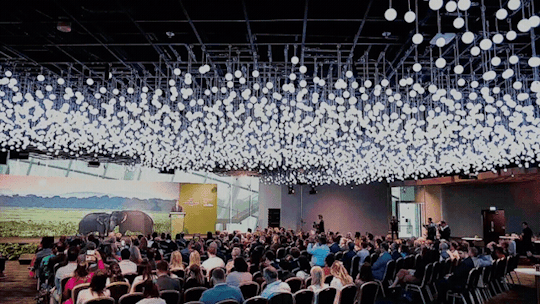
THE PRINCE DIARIES ♚
6 NOVEMBER 2023 || SINGAPORE VISIT : DAY 2 (3/3) - UNITED FOR WILDLIFE GLOBAL SUMMIT
The Prince of Wales attended the United for Wildlife Global Summit at the Flower Dome of the Gardens by the Bay as his final engagement on his first full day in Singapore as part of the 2023 Earthshot Week in the country.
United for Wildlife was founded by William and The Royal Foundation in 2014, and it aims to make it impossible for traffickers to transport, finance, or profit from illegal wildlife products.
This year, the summit was focused on bringing together the organization's Taskforces, partners & law enforcement to show the power of collaboration to end the illegal wildlife trade.
William gave a keynote speech at the event, speaking about the incredible job being done by the Singaporean authorities have taken to tackle illegal wildlife trade, noting that the Republic had seized about 34kg worth of rhinoceros horns worth $1.2 million at Changi Airport in 2022.
He also announced United for Wildlife's new partnership with Mandai Nature to build on the ongoing work for United for Wildlife’s Southeast Asian chapter. And about the creation of the world's first international statement of principles, agreed by governments with signatories including Australia, Canada, New Zealand, the UK, the US, South Africa and Singapore. They will commit to regular cooperation to combat money laundering from transnational criminal syndicates engaged in the illegal wildlife trade.
A partnership was also formalised between United for Wildlife and Interpol through a letter of intent pledging to combine their operational expertise and global networks to tackle illegal wildlife trade.
#prince of wales diaries 23#prince of wales diaries 2023#prince of wales diaries#the prince of wales#prince of wales#prince william#william wales.#british royal family#british royals#royalty#royals#brf#royal#british royalty#duke of cambridge#6112023#Singapore23.2.3#Singapore23#Singapore23.2#royaltyedit#royalty edit#royaltygifs#royalty gifs#my gifs
47 notes
·
View notes
Photo
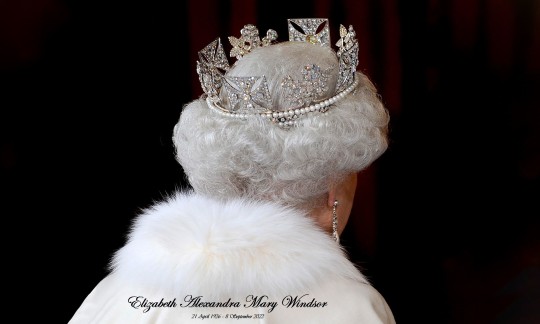
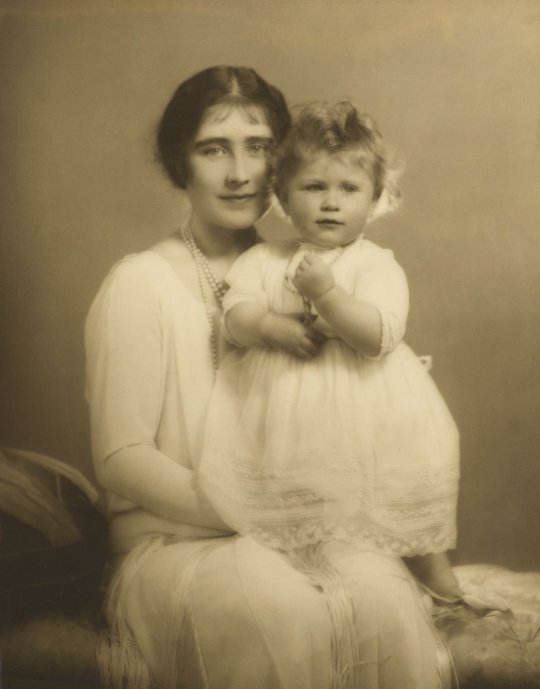


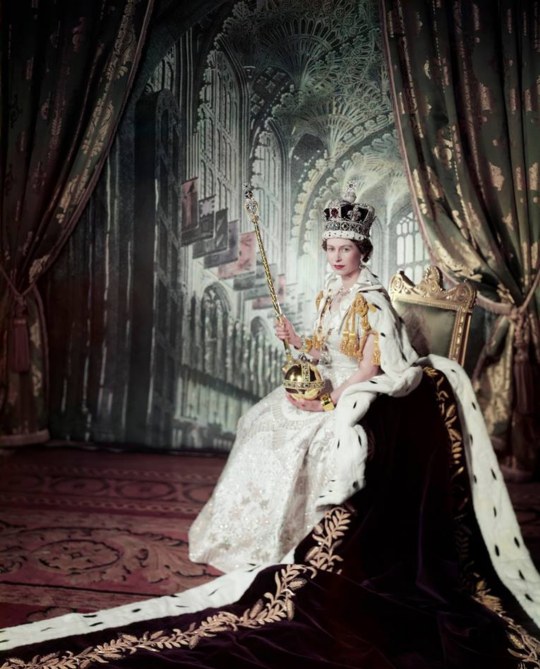
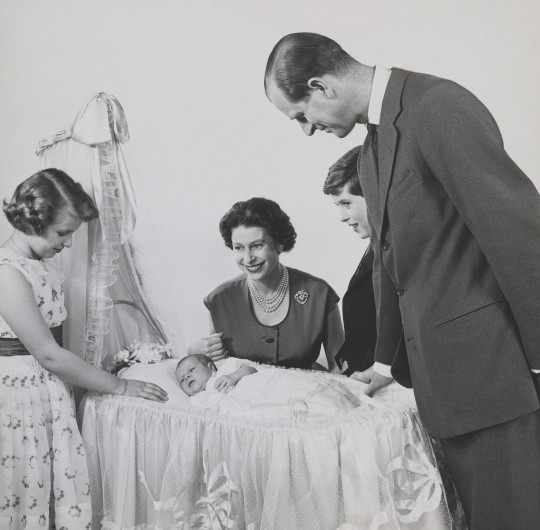


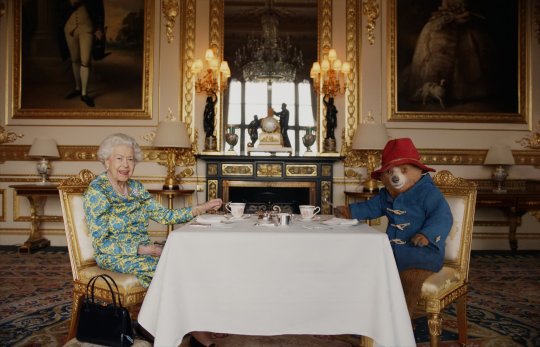

Queen Elizabeth II has died
Queen Elizabeth II, the United Kingdom’ s longest-serving monarch, has died at Balmoral aged 96, after reigning for 70 years.
Elizabeth II (Elizabeth Alexandra Mary; 21 April 1926 – 8 September 2022) was Queen of the United Kingdom and 14 other Commonwealth realms from 6 February 1952 until her death on 8 September 2022.
Her reign of 70 years and 214 days was the longest of any British monarch and the second longest recorded of any monarch of a sovereign country.
Elizabeth was born in Mayfair, London, as the first child of the Duke and Duchess of York (later King George VI and Queen Elizabeth). Her father acceded to the throne in 1936 upon the abdication of his brother, King Edward VIII, making Elizabeth the heir presumptive.
She was educated privately at home and began to undertake public duties during the Second World War, serving in the Auxiliary Territorial Service. In November 1947, she married Philip Mountbatten, a former prince of Greece and Denmark, and their marriage lasted 73 years until his death in April 2021. They had four children together: Charles III; Anne, Princess Royal; Prince Andrew, Duke of York; and Prince Edward, Earl of Wessex.
When her father died in February 1952, Elizabeth—then 25 years old—became queen regnant of seven independent Commonwealth countries: the United Kingdom, Canada, Australia, New Zealand, South Africa, Pakistan, and Ceylon (known today as Sri Lanka), as well as Head of the Commonwealth. Elizabeth reigned as a constitutional monarch through major political changes such as the Troubles in Northern Ireland, devolution in the United Kingdom, the decolonization of Africa, and the United Kingdom's accession to the European Communities and withdrawal from the European Union.
The number of her realms varied over time as territories have gained independence and some realms have become republics. Her many historic visits and meetings include state visits to China in 1986, Russia in 1994, the Republic of Ireland in 2011, and visits to or from five popes.
Significant events include Elizabeth's coronation in 1953 and the celebrations of her Silver, Golden, Diamond, and Platinum Jubilees in 1977, 2002, 2012, and 2022, respectively.
Elizabeth was the longest-lived and longest-reigning British monarch, the oldest and longest-serving incumbent head of state, and the second-longest verifiable reigning sovereign monarch in world history, only behind Louis XIV of France.
She faced occasional republican sentiment and media criticism of her family, particularly after the breakdowns of her children's marriages, her annus horribilis in 1992, and the death of her former daughter-in-law Diana, Princess of Wales, in 1997.
However, support for the monarchy in the United Kingdom remained consistently high, as did her personal popularity. Elizabeth died on 8 September 2022 at Balmoral Castle, Aberdeenshire.
“The Queen is dead, Long live King Charles III”
The Duchess of York with Princess Elizabeth, 30 June 1927 by Marcus Adams (The Royal Collection Trust),
Princess Elizabeth in uniform (1942) by Cecil Beaton (The Royal Collection Trust),
Princess Elizabeth and The Duke of Edinburgh on their wedding day, 20th November 1947 by Sterling Henry Nahum ‘Baron’ (The Royal Collection Trust),
Queen Elizabeth II poses on her Coronation Day on June 2, 1953, in London (Photography by Cecil Beaton),
Queen Elizabeth II with Prince Philip, Duke of Edinburgh and family - 16 Mar 1960 by Cecil Beaton (From the Collection of Queen Elizabeth The Queen Mother),
Queen Elizabeth II and her son, the Prince of Wales, out riding at Windsor Castle I May 18, 1961 (PA),
The Royal coat of arms of the United Kingdom used outside of Scotland,
Queen Elizabeth II Platinum Jubilee 2022 - Platinum Party At The Palace. The Queen Elizabeth II and Paddington Bear having cream tea at Buckingham Palace (BBC Platinum Party at the Palace),
Portrait of Queen Elizabeth II released by The Royal Windsor Horse Show on April 20, 2022 to mark the occasion of her 96th birthday.
#rip#queen elizabeth ii#elizabeth II#queen elizabeth#monarchy#united kingdom#royal#platinium junilee#windsor#markus adams#cecil beaton#theroyalcollectiontrust#paddington#bbc#balmoral#diana#king charles III#princess anne#prince andrew#prince edward#liveunique#history#britsh history#british royality
345 notes
·
View notes
Note
In-keeping with .. well.. my whole life really, I’d like to know about the food one please! Food fair 2022? 😘💕
Hiiiiiiiiiiiiii!
Shamefully, I signed up at the eleventh hour for this fest, wrote 3K, got distracted by the fact that I was throwing a massive 40th birthday party and totally missed the fest - like totally missed it, not just the deadline, I literally didn't open my emails for like two months and then it was like 'ohhhhh...fuck.'
This was the prompt I claimed:
Prompt #34 Claimed for Fic Only
Food Theme: British foods/snacks
Travel Theme: Import shop in a Commonwealth country
Scenario: In 2002, Queen Elizabeth II celebrated her Golden Jubilee. Down on his luck, Draco finds a job in a Muggle pop-up import shop set up for the Queen’s visit (your choice of one of the Commonwealth countries she visited that year: Jamaica, Australia, New Zealand, or Canada). Harry is either visiting or living in the same country and goes looking for his favourite British treats.
Optional Additions: Homesick Harry. Draco makes shit up about the British Royal Family when he talks to customers. Enough Union Jack-themed stuff to bury a palace
Era: EWE | Ignores Epilogue
Maximum Rating: Left up to creator
And below the snip is a little preview of the beast itself.
Kylie Minogue had a lot to answer for.
If Harry was being fair he would probably have admitted it was his own responsibility to thoroughly research a place he was planning a holiday to, and possibly not the responsibility of Kylie Minogue, international pop star, to educate him on the subject.
And Harry, in this theoretical version of reality where he was being fair and reasonable, had to admit he’d done absolutely no research on Australia beyond what he’d seen on episodes of Neighbours or Home and Away over the years at the Dursleys (from his vantage point between the fins of an air vent in the door of his cupboard or sometimes leaning over the bannister at the top of the stairs to strain for a look at the television). Or the occasional packet of Muggle photographs that Hermione enthusiastically shared when they’d come in the post from her parents, with bright pictures of beaches in places like Perth, Western Australia (rather different from the bleak greyness of Perth, Scotland). And that would be stretching the definition of ‘research’ to unrecognisable lengths.
On the other hand (and it was very important to consider all sides of an issue, Hermione’d always said so), Harry’d never had a reason to look up Australia at the library during school, and he hadn’t set foot in one since then either (in fact, he’d made a strenuous effort not to study at all if he could help it). Not knowing things about Australia was not uncommon, and it certainly wasn’t irresponsible (in a general, day-to-day sense); not like not knowing the Muggle road rules would be irresponsible, or not knowing the name of the current Minister for Magic. There was no expectation that the average Englishman should have any baseline knowledge about Australia. Harry had a normal amount of Australia-based information. And that amount was none.
Of course, going to a library was not his only option. Hermione’d set him up with the internet eventually, and helped him buy a computer, but he hadn’t got the hang of using either yet beyond playing Solitaire, and reading all the chain emails that Ron kept sending him about Nigerian princes who needed help getting access to their inheritance, or the ones that claimed if you didn’t send this message along to ten new people your penis would shrink to the size of an acorn and you’d have bad luck for the rest of your life. Harry’d had enough bad luck, and certainly wasn’t willing to risk his penis, so he always forwarded. You couldn’t be too careful.
But cumulatively, that left Harry with hardly any time to do research, and thus a rather short list of things he knew about Australia before he impulsively booked himself on what he’d described to Ginny as a ‘maybe a week, maybe forever’ holiday.
What Harry knew about Australia up to and including the moment he cleared Customs and Border Control had been as follows:
1 - Christmas was in the summer there, and a lunch of beer and seafood followed by an afternoon lazing around on the beach sounded kind of exciting after twenty-one years of snow and roast dinners, and more recently, mulled wine.
2 - The weather was always sunny and perfect, even in the middle of winter.
3 - The spiders were big and the snakes enormous.
4 - Nobody had heard of The Boy Who Lived, there.
There was nothing wrong with a bit of snow and a roast dinner (England could keep the mulled wine), and frankly, as appealing as prawns by the ocean sounded it would mean giving up Christmas at the Burrow and knitted Weasley jumpers, and there was nothing Harry could think of that would be worth missing that. Ron had been relieved to hear it, and was far more receptive once they’d got that cleared up.
“I’d come with you, you know,” Ron had said. He’d then stuffed most of a ham and cheese croissant into his mouth in one go and anything else he’d intended to say was muffled by pork and dairy.
“I know you would,” Harry’d said. “I just want to try doing something by myself for a change that’s not inherently dangerous.”
Ron understood, a bit, being one of many brothers.
Escaping the gloom of London in winter generally, and the never-ending microscope of the Daily Prophet specifically, was becoming less of a ‘nice to have’ and more of an essential for life. Both were wearing on Harry’s spirit, more and more as each year passed. His temper had never been thinner and he flinched every time there was a flash of light, which was especially problematic in the lead up to Christmas because there were quite a number of flashing lights around that time of year. So that was how Harry found himself on one particularly cold afternoon in late January, casually slipping on a Glamour and popping into the wizarding travel agency on Quizzic Alley to book himself an international Portkey to Melbourne, Australia, departing two weeks from the day and with an open-ended return date.
“Oh, Harry!” Hermione had gripped his hand tightly enough to hurt a little bit. “I’m very pleased for you. I’m a bit nervous about you going by yourself—I’d come with you, if you wanted me to.”
“Of course you would.” He’d squeezed back as best as he was able, but he’d started to lose feeling in his knuckles. “I’ll be alright—I’ll be great.”
While not in possession of much of a plan and even less practical knowledge, Harry hadn’t picked Melbourne completely at random either. Australia was actually perfect for what he was looking for, which was to do something a bit different and to do it completely anonymously, but not to bite off more than he could chew all in one go.
A couple of years ago, pretty much right after Hogwarts, Dean and Seamus had gone to America. The Gryffindor’s all expected that it would be for a good long while (years at the very least) but they were both back within six months, and Dean had told Harry once over beers at the Leaky that he couldn’t explain why exactly, but he’d struggled to shake off a feeling of not-rightness the whole time they were there. The money looked strange, the bread was weird, none of his shows were on the telly, and he found he missed the sound of an English accent so much that it ached inside. Hermione said it was something called ‘culture shock’, and Dean had said he’d never considered that it would happen to him, and certainly not in America.
That story was front of mind as Harry’d leaned over a pile of brochures at the travel agent’s and pushed aside Contiki tours by enchanted bus, carriage, boat or carpet, as well as locations which were both tempting and exotic. He didn’t want a cookie cutter tour - that was about the only thing he did know, that he didn’t want that. He could go to Brazil and see the beaches and the football and the amazing architecture. Or he could go to Cambodia and see the temples and jungles and elephants. He could go to Iceland and see…ice, probably. There were a million amazing things he could do in the world, but Harry had to remember a couple of fairly key factors:
1 - He had, rather recently, been through a pretty traumatic life event and his inner reservoir of resilience was at an all time low.
2 - Although he’d been on a number of pretty crazy adventures, he’d never really been out of the United Kingdom, and in fact had rarely ventured beyond either Surrey or Hogsmead.
3 - Per the previous two points, he’d spent quite a lot of his life in a cupboard.
4 - This time, he’d be really and truly on his own.
What it boiled down to was that Harry didn’t want to push himself too hard too fast, and ruin what would hopefully be a life changing experience. Life changing in a good way, for once.
Everything, including being on the run and sleeping in a tent in a forest while plotting to kill an evil wizard, was a lot easier when you had your friends with you. Honestly, Harry wasn’t entirely sure he would have got anywhere near killing Voldemort without Hermione and Ron. He’d never really had the luxury of easing himself into anything before, and if Dean and Seamus had struggled to cope with America together, Harry wasn’t confident that he’d be any better hanging off the side of a mountain somewhere, or sweating his way through a market in Morocco.
In Australia he could be a stranger in a strange land, except it wouldn’t be too strange since everyone spoke English (of a sort—Australians seemed to do rather odd things to their vowels) and used similar money, and there would be food that he recognised, and television he was used to. It was a massive step out of his comfort zone while still being not that different from his life in England. He’d watched the soaps so often over the years (or rather, listened to them from his cupboard or behind the locked door of his bedroom) that it felt like he’d practically lived there already, and suburban Melbourne seemed like it really wasn’t all that dissimilar to life in Little Whinging if Neighbours was any indication. Cul-de-sacs and nosy neighbours, and supermarkets and telly, and nosy old ladies named Madge. Just like Surrey, but warmer and with bigger spiders.
The food would be familiar, which was good, but Hermione kept saying Australia was a very multicultural place so he’d have plenty of opportunity to try all the things he’d wondered about, like sushi and dumplings, and pad thai, and scallops. You could get those things in London too, but Harry didn’t fancy the front page spread of him spitting a mussel out into a napkin that he would have got at home. Vegemite. Prawns. Those little brown bottles of bitter. It gave him a flutter of excitement in his chest.
Hermione’d said he should get the Lonely Planet guide, so Harry had, but never bothered to read it. What was the point? It wasn’t like he was headed to Vietnam, or Uruguay, or Bangladesh (was Bangladesh a country or a city?). Melbourne was basically a smaller version of London, but with more sunshine and a lazier speech pattern. It was going to be great.
Kylie Minogue really should have warned him.
9 notes
·
View notes
Text

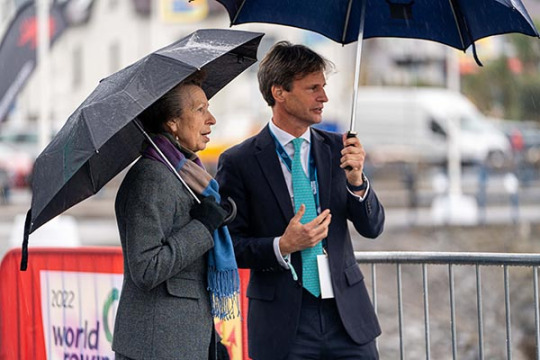

14 October 2022
HRH The Princess Royal visited the 2022 World Rowing Beach Sprint Finals hosted at Saundersfoot Harbour, Pembrokeshire. She was introduced to athletes from Great Britain, the Bahamas, Canada, Ireland and the USA and watched preliminary rounds of this exciting new format for rowing racing
📸: World Rowing/Mauricie Summers
© British Rowing
36 notes
·
View notes
Note
Don’t you find it weird that Charles and Camilla barely get any negative articles about them and they always seem to send William and Kate to the more difficult countries?
I've never thought about this! But wait this actually makes a lot of sense because I cannot remember the last time Charles and Camilla had a tour in a country where imperialism is a widespread debate. Last year Charles kind of got some blowback in Canada, but Canada still has some very nice ties with the UK. Meanwhile the then Cambridges had to suffer in the Caribbean. I found it very odd that Charles and Camilla didn't do a high-profile foreign tour to a place other than Canada during a Jubilee year.
In recent years, Charles has done state visits to countries in Africa and other places where ties with the British are more controversial. He was in Rwanda in June 2022 and was met with discussions about keeping the Queen as head of state. But he hasn't done any high-profile tours in a long while . . . hm. The last big tour of Africa was Harry and Meghan's (Anne's and other members that have gone since never got the same amount of eyes) and William and Kate's disaster tour of the Caribbean was only just over a year ago.
I think I'm going to keep an eye on where he's traveling next. Germany is obviously tame, although I think it's ridiculous how the media is trying to force it as a success because the British Royals are Germans themselves and Charles is "returning to his homeland". France is also tame, which is why I find it a joke that they postponed because of the protests. Maybe it's a security issue, but I doubt Charles and Camilla would be in direct danger. It would have been super cool if he'd gone anyway and kept up a Keep Calm & Carry On attitude, but now he looks as if he didn't want to go because the French plebs wouldn't roll out the red carpet for him.
Anyway, I think we should be interested in future high-profile tours to these places: India, Australia, and the Caribbean. There's a great scene in The Crown where Elizabeth tells her children that they have to visit these places so they don't have any "silly thoughts about independence". They have to visit these countries in order to promote British interests and the monarchy, they can't just ignore them. India doesn't have the King as head of state but they are a member of the Commonwealth (the largest by population) and its history with the British Crown is violent and disturbing. Australia is usually a huge success for the royals but in recent years there has been a lot of republican sentiment and talk of colonization. The Caribbean encompasses lots of countries and has proven to be a difficult place for the royals to be accepted. It would be interesting if upcoming visits to these countries are given to William and Kate or even Sophie and Edward. When royals go to these countries the criticism is very pointed and direct, Charles has always had an ego and a childish need for praise, plus, as head of state, he is the living embodiment of the British Crown. When he travels to countries that want to remove the King as head of state, they're talking about Him, not his mother. Their issues would be with him.
Thank you for this ask, anon, you've given me much to think about.
13 notes
·
View notes
Text
The Prince of Wales’ Court Circular entries for September 2022
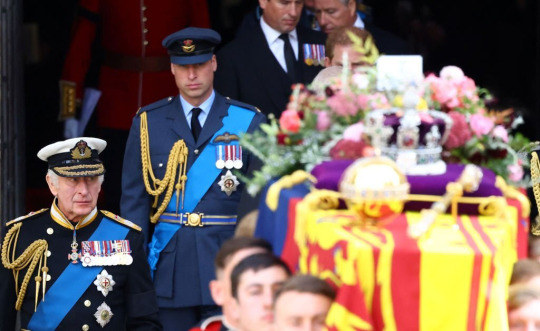
Total: 21 engagements
Solo:
Public: 0
Private: 4
Joint (w/ Kate and/or other BRF members):
Public: 15
Private: 2
Breakdown:
September 10: Attended the first Privy Council of King Charles III at St James’s Palace
September 11: Held a Meeting with the Rt Hon Mark Drakeford MS (First Minister of Wales) via telephone
September 14: (3)
Held a Meeting with the Duchy of Cornwall Finance Committee via video link
Followed the Coffin bearing The late Queen was borne in State from Buckingham Palace to the Palace of Westminster to Lie-in-State in Westminster Hall
Attended a Service for the Reception of the Coffin conducted by the Archbishop of Canterbury and the Dean of Westminster (the Very Reverend Dr David Hoyle)
September 15: Received local Norfolk residents at Sandringham House who were introduced to Their Royal Highnesses by His Majesty’s Lord-Lieutenant of Norfolk (the Lady Dannatt)
September 16: Visited Army Training Centre Pirbright, Brookwood, Woking, to meet Defence Force personnel from Australia, Canada and New Zealand and were received by His Majesty’s Lord-Lieutenant of Surrey (Mr Michael More-Molyneux)
September 17: (4)
Visited the Metropolitan Police Service Special Operations Room, 109 Lambeth Road, London SE1
Met members of the public queueing to pay their respects to Her late Majesty
Attended a Luncheon at Buckingham Palace for Governors-General
Mounted Vigil at the Coffin of Her late Majesty this evening as it Lay in State in Westminster Hall, Palace of Westminster
September 18: Attended a Reception at Buckingham Palace for Heads of State and Official Overseas Guests
September 19: (3)
Followed the Coffin bearing The late Queen Elizabeth II from Westminster Hall to Westminster Abbey
Attended the State Funeral of The late Queen Elizabeth II at Westminster Abbey
Attended the Committal Service for The late Queen Elizabeth II in St George’s Chapel
September 22: (2)
Visited Windsor Guildhall, High Street, Windsor, to meet personnel involved in supporting the arrangements for the Committal Service for The late Queen Elizabeth Il and were received by Mr Graham Barker (Vice Lord-Lieutenant of the Royal County of Berkshire)
Held a Meeting via video link with the Lord Hague of Richmond (Chairman), Mr Simon Patterson (Vice Chairman) and Ms Amanda Berry (Chief Executive)
September 26: Received Mr Alastair Martin (Secretary of the Duchy of Cornwall)
September 27: (3)
Visited the Royal National Lifeboat Institution, Newry Beach, Holyhead, and were received by His Majesty’s Lord-Lieutenant of Gwynedd (Mr Edmund Bailey)
Met local residents at Holyhead Marina Café and Bar
Visited St Thomas Church, Lewis Street, St Thomas, Swansea, and were received by His Majesty’s Lord-Lieutenant of West Glamorgan (Mrs Louise Fleet)
——————————————————————————
Current Total for 2022: 153 engagements
37 notes
·
View notes
Text
"EMILY" (2022) Review

"EMILY" (2022) Review
I have been aware of only four productions that served as biopics for the Brontë family. I have seen only three of these productions, one of them being a recent movie released in theaters last year. This latest movie, the first to be written and directed by actress Frances O'Connor, is a biopic about Emily Brontë titled "EMILY".
This 2022 movie began with a question. While Emily Brontë laid dying from tuberculosis, her older sister Charlotte asks what had inspired her to write the 1847 novel, "Wuthering Heights". The story flashed back to 1839, when Charlotte returned home to the Haworth parish in West Yorkshire to visit before her graduation from school. Emily attempts to re-connect with the older sister about her fictional works, but Charlotte merely dismisses her creations as juvenile activities. Around the same time, their father Patrick, the parish's perpetual curate receives a new curate name William Weightman. While Charlotte, younger sister Anne and several young women seem enamored of the handsome newcomer, only Emily is dismissive of him. Emily accompanies Charlotte to the latter's school to learn to become a teacher and their brother Bramwell goes to study at the Royal Academy of Arts. Both Emily and Branwell return shortly to Haworth after as failures. When Branwell manages to find a job as a tutor, the Reverend Brontë charges William to provide French lessons to Emily. What began as lessons in French and religious philosophy lessons, eventually evolves into a romantic entanglement between the pair.
"EMILY" managed to garner a good deal of critical acclaim upon its release in theaters, including four nominations from the British Independent Film Awards. It also won three awards at the Dinard British Film Festival: Golden Hitchcock, Best Performance Award for leading actress Emma Mackey and the Audience Award. I have no idea how much "EMILY" had earned at the U.K. box office. But in North America (the U.S. and Canada), it earned nearly four million dollars. Regardless of this . . . did I believe "EMILY" was a good movie? Did it deserved the accolades it had received not only from film critics, but also many moviegoers?
I cannot deny that the production values for "EMILY" struck me as first-rate. I believe Steve Summersgill did a first-rate job as the film's production designer. I thought he had ably re-created Britain's West Yorkshire region during the early 1840s with contributions from Jono Moles' art direction, Cathy Featerstone's set decorations and the film's art direction. Nanu Segal's photography of the Yorkshire locations created a great deal of atmosphere with moody colors that managed to remain sharp. I found myself very impressed with Michael O'Connor's costume designs. I thought he did an excellent job in not only re-creating fashions from the end of the 1830s to the late 1840s, he also ensured that the costumes worn by the cast perfectly adhered to their professions and their class, as shown below:

However, according to a relative of mine, Emily Brontë's fashion sense had remained stuck in the mid-to-late 1830s, something that the 2016 movie, "TO WALK INVISIBLE" had reflected. On the other hand, "EMILY" had the famous author wearing up-to-date fashion for someone of her class:
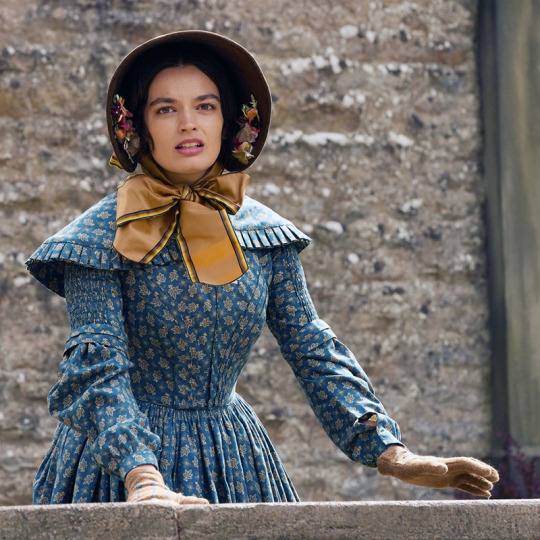
And I must admit that I found those moments featuring actress Emma Mackay wearing her hair down . . . in an era in which Western women did no such thing . . . very annoying. Otherwise, I certainly had no problems with the movie's production values. The movie also included a fascinating scene in which Emily had donned a mask and pretended to be the ghost of the Brontës' late mother during a social gathering. The scene reeked with atmosphere, emotion and good acting from the cast. I also found the scene well shot by O'Connor, who was only a first-time director.
"EMILY" also featured a first-rate cast. The movie featured solid performances from the likes of Amelia Gething as Anne Brontë, Adrian Dunbar as Patrick Brontë, Gemma Jones as the siblings' Aunt Branwell, Sacha Parkinson, Philip Desmeules, Veronica Roberts and other supporting cast member. I cannot recall a bad performance from any of them. The movie also featured some truly excellent performances. One came from Fionn Whitehead, who gave an emotional performance as the Brontë family's black sheep, who seemed overwhelmed by family pressure to succeed in a profession or the arts. Alexandra Dowling gave a subtle, yet charged performance as Charlotte Brontë, the family's oldest sibling (at the moment). Dowling did an excellent job of conveying Charlotte's perceived sense of superiority and emotional suppression. I wonder if the role of William Weightman, Reverend Brontë's curate, had been a difficult one for actor Oliver Jackson-Cohen. I could not help but notice that the role struck me as very complicated - moral, charming, intelligent, passionate and at times, hypocritical. Not only that, I believe Jackson-Cohen did an excellent job of conveying the different facets of Weightman's character. The actor also managed to create a dynamic screen chemistry with the movie's leading lady, Emma Mackey. I discovered that the actress had received a Best Actress nomination from the British Independent Film Awards and won the BAFTA Rising Star Award. If I must be honest, I believe she earned those accolades. She gave a brilliant performance as the enigmatic and emotional Emily, who struggled to maintain her sense of individuality and express her artistry, despite the lack of support from most of her family.
"EMILY" had a great deal to admire - an excellent cast led by the talented Emma Mackey, first-rate production designs, and costumes that beautifully reflected the film's setting. So . . . do I believe it still deserved the acclaim that it had received? Hmmm . . . NO. No, not really. There were two aspects of "EMILY" that led me to regard it in a lesser light. I thought it it was a piss poor biopic of Emily Brontë. I also found the nature of the whole romance between the author and William Weightman not only unoriginal, but also unnecessary. Let me explain.
As far as anyone knows, there had been no romance - sexual or otherwise - between Emily Brontë and William Weightman. There has never been any evidence that the two were ever attracted to each other, or one attracted to the other. Many have discovered that the youngest Brontë sister, Anne, had been attracted to Weightman. In fact, she had based her leading male character from her 1947 novel, "Agnes Grey", on the curate. There have been reports that Charlotte had found him attractive. But there has been no sign of any kind of connection between him and Emily. Why did Frances O'Connor conjure up this obviously fictional romance between the movie's main character and Weightman. What was the point? Did the actress-turned-writer/director found it difficult to believe that a virginal woman in her late 20s had created "Wuthering Heighs"? Did O'Connor find it difficult to accept that Emily's creation of the 1847 novel had nothing to do with a doomed romance the author may have experienced?
Despite Mackey's excellent performance, I found the portrayal of Emily Brontë exaggerated at times and almost bizarre. In this case, I have to blame O'Connor, who had not only directed this film, but wrote the screenplay. For some reason, O'Connor believed the only way to depict Brontë's free spirited nature was to have the character engage in behavior such as alcohol and opium consumption, frolicking on the moors, have the words "Freedom in thought" tattooed on one of her arms - like brother Branwell, and scaring a local family by staring into their window at night - again, with brother Branwell. This is freedom? These were signs of being a "free spirit"? Frankly, I found such activities either immature or destructive. Worse, they seemed to smack of old tropes used in old romance novels or costume melodramas. In fact, watching Emily partake both alcohol and opium reminded me of a scene in which Kate Winslet's character had lit up a cigarette in 1997's "TITANIC", in order to convey some kind of feminist sensibility. Good grief.
What made O'Connor's movie even worse was her portrayal of the rest of the Brontë family. As far as anyone knows, Reverend Brontë had never a cold parent to his children, including Emily. Emily had not only been close to Branwell, but also to Anne. And Branwell was also close to Charlotte. All three sisters had openly and closely supported each other's artistic work. Why did O'Connor villainize Charlotte, by transforming her into this cold, prissy woman barely capable of any kind of artistic expression? Why have Charlotte be inspired to write her most successful novel, "Jane Eyre", following the "success" of "Wuthering Heights", when her novel had been published two months before Emily's? Why did she reduce Anne into the family's nobody? Was it really necessary for O'Connor to drag Charlotte's character through the mud and ignore Anne, because Emily was her main protagonist? What was the damn point of this movie? Granted, there have been plenty of biopics and historical dramas that occasionally play fast and loose with the facts. But O'Connor had more or less re-wrote Emily Brontë's life into a "re-imagining" in order to . . . what? Suggest a more romantic inspiration for the creation of "Wuthering Heights"?
I have another issue with "EMILY". Namely, the so-called "romance" between Brontë and Weightman. Or the illicit nature of their romance. Why did O'Connor portray this "romance" as forbidden? A secret? I mean . . . why bother? What was it about the pair that made an open romance impossible for them? Both Brontë and Weightman came from the same class - more or less. Weightman had been in the same profession as her father. And both had been college educated. Neither Emily or Weightman had been romantically involved in or engaged to someone else. In other words, both had been free to pursue an open relationship. Both were equally intelligent. If the Weightman character had truly been in love with Emily, why not have him request permission from Reverend Brontë to court her or propose marriage to Emily? Surely as part of the cleric, he would have considered such a thing, instead of fall into a secretive and sexual relationship with her. It just seemed so unnecessary for the pair to engage in a "forbidden" or secret romance. Come to think of it, whether the film had been an Emily Brontë biopic or simply a Victorian melodrama with fictional characters, the forbidden aspect of the two leads' romance struck me as simply unnecessary.
What else can I say about "EMILY"? A rich atmosphere filled the movie. The latter featured atmospheric and beautiful images of West Yorkshire, thanks to cinematographer Nanu Segal. It possessed a first-class production design, excellent costumes that reflected the movie's 1840s setting and superb performances from a cast led by the talented Emma Mackey. I could have fully admired this film if it were not for two aspects. One, I thought it was a shoddy take on a biopic for author Emily Brontë that featured one falsehood too many. And two, I found the secretive and "forbidden" nature of Brontë's false romance with the William Weightman character very unnecessary. Pity.

#emily 2022#frances o'connor#emily bronte#bronte sisters#charlotte bronte#anne bronte#emma mackey#oliver jackson cohen#william weightman#wuthering heights#fionn whitehead#branwell bronte#adrian dunbar#gemma jones#alexandra dowling#amelia gething#sacha parkinson#philip desmeules#veronica roberts#gothic romance#period drama#period dramas#costume drama
5 notes
·
View notes
Text
When the Queen is your boss by Susan Delacourt (September 9th 2022)
OTTAWA—In her 60 years on the throne, Queen Elizabeth II has presided over 20 Parliaments in Canada, featuring 11 prime ministers and 11 governors general.
What is it like to work for the Queen? An array of former prime ministers and governors general offer glimpses of working life under Her Majesty’s rule.
1. Michaëlle Jean
No one tells you when you are named governor general that you might end up doing dishes with the Queen. But this is exactly what happened in early September 2005, as Michaëlle Jean was preparing to take up her new role as the Queen’s representative in Canada.
About three weeks before her formal installation, Jean flew across the Atlantic to spend some time with the Queen at her summer residence, Balmoral Castle. Rather unusually, in terms of protocol and precedence, Jean had asked to make it a family visit; to bring along her husband, filmmaker Jean-Daniel Lafond, and their daughter, Marie-Eden, then 6 years old. There was much fuss and back-and-forth among the protocol people about this business of bringing the whole family. Usually appointees arrive for these visits with only a spouse, if anyone at all.
“We had to negotiate that; it was an ‘adjustment,’” Jean said. In addition, Jean and the family received extensive, detailed instructions on all the protocol minutiae for dealing with that first meeting. “It was pretty heavy.”
So it was a pleasant surprise for Jean to pull up at Balmoral, family in tow, and find the Queen and Prince Philip standing at the front door like any weekend hosts, casually walking out and extending their hands. Philip pulled Marie aside and asked if she wanted a Coca-Cola. Marie said she wasn’t allowed to have this at home. “It’ll just be between you and me,” Philip replied.
Jean realized, then and there, that she could start breathing.
The Queen led the family to their quarters, which happened to be Queen Victoria’s old suite, and showed them how to use the tub, including the fussy new faucets installed after a recent renovation. “She wanted to greet us in her home, herself,” Jean said.
The entire stay, in fact, turned out to be a remarkable glimpse into the warm family life of the royals.
The Queen told Jean that they would be dining at a favourite cottage on the property, about a half-hour’s drive from the castle. And the driver turned out to be none other than the Queen herself, behind the wheel of a new, fully outfitted Range Rover, which clearly was a prized possession. Tearing along the road, with Lafond in front, Jean and Marie in the back seat, the Queen told of how she had learned to take apart car engines in her service as a volunteer mechanic during World War II.
“She drives very fast,” Jean said. “(Yet) she handles the car very well … We got a great sense of her character and her independence.”
Pulling up to the cottage, Jean noticed a man by the barbecue, wearing hunting plaid, who had obviously been given the task of cooking the dinner. While the Queen and the rest of Jean’s family went inside the cottage, Jean wandered over and discovered another surprise — Prince Philip doing barbecue duty. They chatted and Philip gave Jean a bit of advice: compliment the Queen on her salad dressing. Apparently it’s a recipe that Her Majesty invented, and she is quite proud of it.
Walking inside, Jean discovered a hive of kitchen activity. “And who do I see cooking? The Earl of Wessex (Edward, the Queen’s youngest son), cooking the appetizers.”
No staff members were in sight — this was a dinner entirely created by the royals, for their Canadian visitors. It was one family, dining with another. “It was great conversation, fun … no protocol,” Jean said.
It also happened to be Jean’s 48th birthday — a fact she hadn’t disclosed. But a cake was magically produced at the end of dinner, with “21 Forever” written in icing.
And at the end of the dinner, both families gathered up the plates, went into the kitchen and did the dishes.
“It was probably the best birthday of my life,” Jean said.
2. Adrienne Clarkson
The Queen’s last big anniversary was in 2002, when she marked half a century on the throne. In honour of this milestone, all the Commonwealth governors general were invited to spend some time with the Queen at Windsor Castle that April. Canada’s governor general at the time was Adrienne Clarkson.
The Queen had lost her mother and her sister in the preceding months of that year, and was officially in mourning, but the ceremonies were going ahead regardless.
Clarkson arrived with the other governors general and was guided to her room. Along the way, they were taken through a gallery featuring the royal collection of art — including works by great masters such as Rembrandt, Rubens and Titian. Once in her room, Clarkson decided she had a little time to kill before formal tea with the Queen, and she set out on her own to take a closer look at the paintings.
Entranced by the art on display, Clarkson kept walking down the castle’s cavernous corridors, not really bothering to take note of her route. “I didn’t take any thread with me, to mark my path. Suddenly, I thought: ‘How do I get back to our room?’” Realizing she was now completely lost in the castle, Clarkson decided to keep looking at the paintings, while watching for any possible exit.
All at once, to her left, came a pack of dogs — a dozen of the Queen’s corgis, and dachshund-corgi mixes. Clarkson recognized the dogs from her visit to Balmoral several years previously. She made a snap decision — if she followed the corgis, she would find her way out of the art-lined maze.
“I sort of rushed behind them, we turned a corner … and there is Her Majesty, standing in riding clothes, looking hale and hardy,” Clarkson said. “She had a riding crop in one hand and in her other hand, she had little treats that she was giving to the corgis.”
Unruffled by the surprise encounter, the Queen said a friendly hello and then a breezy: “See you at tea time.” The corgis swarmed behind her, and Clarkson was left to find her own way — successfully — back to her room.
That particular stay, however, had an abrupt end, when Clarkson learned that four Canadian soldiers had been killed in a “friendly fire” incident from U.S. forces in Afghanistan. With the help of the Queen’s royal aircraft, Clarkson was able to travel immediately to Germany, where some of the wounded soldiers had been transported. It meant that Clarkson missed a memorial service for Princess Margaret, but “it was important to me to be right there on the ground (in Germany),” Clarkson said.
Clarkson has nothing but fond memories of working for the Queen. “She’s always been an extremely acute and aware woman,” she said. “She has a great knowledge of the past and of Canadian prime ministers.”
It should be noted, Clarkson said, that the Queen never discusses politics — at least in her experience. “We only discussed personalities,” she said. “The Queen stays completely out of (politics and government.) … She never inquires and never says things like: ‘Gee, you have an awful lot of minority governments,’ or anything like that. She is totally appropriate.”
3. Joe Clark
During his brief time as prime minister, from mid-1979 to early 1980, Joe Clark didn’t have much of an opportunity to deal with the Queen directly. But the Royal Family made some lasting impressions on Clark and his wife, Maureen McTeer, through his long political career.
McTeer’s decision to keep her own name stirred up plenty of controversy in Canadian politics in the late 1970s. Some people registered their disapproval by calling her Mrs. Clark anyway.
Shortly after Clark became prime minister, the Queen Mother visited Halifax, and McTeer was put through the “Mrs. Clark” routine all through a formal lunch. “All the Liberal women at my table called me Mrs. Clark,” McTeer wrote in her book, titled In My Own Name.
The Queen Mother, ever astute, was the exception. After the lunch, McTeer escorted the Queen Mother to her limousine, and got some advice. “I always tell my grandchildren that they must be themselves and do what they believe best in life. Don’t be bothered by criticism.” And then, as parting words, the Queen Mother said: “Good Luck …. Ms. McTeer.”
A few years later, after Clark failed to get more than a bare 66 per cent approval from his party at a leadership review and stepped down as Progressive Conservative leader, he was present at Rideau Hall for the visit of Prince Charles and Diana. When Clark’s turn came to shake the royals’ hands in the receiving line, “Prince Charles’ first words to me were: ‘Why wasn’t two-thirds enough?’”
4. John Turner
Long before his brief stint as prime minister in 1984, John Turner had struck up his own friendship with the Royal Family — famously, with Princess Margaret.
The two met while the princess was on a tour of B.C. They danced all night at a fancy, formal ball, and British tabloids speculated about a budding romance between the handsome, young lawyer and the Queen’s sister. The romance never happened, but the friendship endured, and Turner visited Balmoral Castle a few times in subsequent years, shooting pheasants with Prince Philip and mixing drinks for the Queen Mother.
More than 20 years later, after Turner won the Liberal leadership and the prime minister’s job, he was faced with an awkward situation. He felt he had to call a general election, but that would require a postponement of a planned visit to Canada that summer by the Queen. Turner could have made the request by phone, but in deference to his long friendship with the family, he decided he should go in person. “It was a matter of courtesy,” Turner said.
So off Turner flew to Windsor Castle in early July, accompanied by his wife, Geills. The Queen was reportedly very understanding, and agreed to postpone her trip until the fall — when, as it happened, Turner would no longer be prime minister. During this visit, Turner and his wife dined with the Queen on the terrace of the castle. And during lunch, the Queen asked Turner’s views on the monarchy. “I’m with you 100 per cent,” Turner told the Queen.
In 2000, when the Queen Mother turned 100, Turner sent her a note, wishing her a happy birthday. Not long after, he received a formal reply — with a personal postscript from the Queen Mother. She said she remembered him fondly. “You make the best martinis,” the Queen Mother wrote.
5. Brian Mulroney
In his nine years in office, from 1984 to 1993, Brian Mulroney had an opportunity to forge a deep friendship with the Queen. He dined with her and other world leaders at Buckingham Palace in 1986, at the height of efforts to free Nelson Mandela from prison in South Africa.
And on many occasions, during the Queen’s trips to Canada, Mulroney would convene small, convivial dinners with Her Majesty at 24 Sussex Drive, often with just his family and perhaps a couple close friends as guests. The eldest Mulroney children, Ben, Caroline and Mark — Nicholas was then too young — were included as well.
“The kids loved her. She was terrific with them, too,” Mulroney said.
One memory stands out. It was Canada Day 1992, and the country was celebrating its 125th birthday. The Queen had a busy day of events, but had explicitly asked to clear some time in her schedule to relax with the Mulroneys at 24 Sussex.
They laid out a low-key lunch on the second floor of the residence, which has a spectacular view overlooking the Rideau River and Quebec on the far shore. The Queen, a modest glass of wine in hand, kicked off her shoes, put her feet up, and started to chat with Brian and Mila Mulroney about “free spirits” — people who throw off their societal obligations and go where their hearts take them.
“I thought it was fascinating, because she’s so constrained by protocol and all the stuff she has to do,” Mulroney said.
She spoke in particular about Susan Barrantes, mother of Sarah Ferguson, the Duchess of York. (Ferguson was married at the time to the Queen’s son, Andrew.) In the 1970s, Barrantes shocked English high society by deserting her family and running off to Argentina to marry professional polo player Hector Barrantes. She earned the nickname “the bolter” for the decision and was largely ostracized by the upper class in Britain.
But the Queen, in conversation with the Mulroneys that afternoon, pronounced no judgment whatsoever. “She was almost wistful,” Mulroney said. She spoke of the need to understand such free spirits, to respect their life decisions. “It was almost as if she was saying: ‘Don’t make hard and fast value judgments on people just because they’re not like you.’ I was taken by this.”
Was this a hint of the Queen’s preoccupations with her own family at the time? Two of her children’s marriages were crumbling — Prince Charles and Diana, famously, as well as the marriage between Andrew and Sarah. If so, she betrayed no hint of it to Mulroney. “I don’t remember it being apropos of anything,” Mulroney said. “It wasn’t like I brought it up.”
Mulroney’s friendship with the Queen has endured. He’s seen her socially on occasions over the past few years. “She’s delightful. She’s known everybody since Adam. She’s shrewd and thoughtful and incisive,” Mulroney said.
6. Kim Campbell
Canada’s first female prime minister, Kim Campbell, didn’t stay in office long enough to have any direct dealings with the Queen.
But Campbell does have some strong views, informed by her years in government, about the importance of the Queen in this country.
Through the Queen and her representatives in Canada — governors general and lieutenant governors in the provinces and territories — Canadians have celebrated the diversity of the country. “It’s interesting that we had our first woman governor general (Jeanne Sauvé) before we had our first woman prime minister,” Campbell says. The royal representatives in Canada have also included aboriginal people, people of colour and more diversity than one often sees in the political class, she notes.
The Queen has also come to represent duty and a life of public service and charity, Campbell says, and these are what Canadians celebrate with the pomp and circumstance surrounding the royals.
Campbell says no prime minister can remain unaware of the links between the Crown and Parliament. The royal presence is felt when ministers and governments are sworn in at Rideau Hall and it is also ever-present when prime ministers consult with their governors general. The monarchy infuses the job with dignity and discretion, Campbell says.
“My audiences with (the late governor general) Ray Hnatyshyn were ones in which you knew you could discuss what you were doing and what you were thinking about things, with the absolute assurance that what you were saying would never go out of that room.”
7. Jean Chrétien
One prime minister can claim a very special relationship with the Queen — Jean Chrétien, who has the title to prove it. In 2009, Chrétien was made part of the Queen’s Order of Merit — an elite group with just 24 members, described as “individuals of exceptional distinction in the arts, learning, sciences and other areas such as public service.”
And this year, in deference to that relationship, Prime Minister Stephen Harper named Chrétien as Canada’s representative to the Diamond Jubilee Trust.
Some of Chretien’s stories about the Queen are legendary. There was the famous signing of the Constitution on Parliament Hill in 1982, for instance, when Chrétien was justice minister and the Queen was present for the ceremony. When it came time for Chrétien to put his signature on the document, he found that his prime minister, Pierre Trudeau, had broken the nib of the pen. “Merde,” Chrétien proclaimed, just before he realized he had sworn in front of Her Majesty. While he was red-faced, though, the Queen was laughing.
As well, in Chretien’s second biography, My Years as Prime Minister, he tells a couple more anecdotes about his long association with the Queen.
As prime minister, his first encounter with her was at Sandringham in January 1994, when he learned that the Queen and the Queen Mother loved to speak French. In Chretien’s mother tongue, they spoke of Her Majesty’s first trip to Canada in 1939, when she was a child, and long before her coronation.
Less than six months later, Chrétien lent his counsel to the Queen, advising her not to agree to a request to apologize to Maoris in New Zealand for their treatment under the colonial regime. Chrétien said it would set a precedent, which would find the Queen obliged to apologize to more than 600 First Nations bands in Canada as well. “You’ll be on your knees for quite a long time,” he told her. With some quiet diplomacy in the direction of his New Zealand counterpart, James Bolger, Chrétien managed to get the apology request withdrawn.
Chrétien and the Queen also shared some laughs in 1995 about a Montreal radio prank, which had inadvertently revealed the monarch’s affection for the Canadian prime minister. A comedian named Pierre Brassard, pretending to be Chrétien, had managed to get the Queen on the telephone and kept her on the line for 15 minutes, asking whether she would make a nationally televised speech in the midst of the Quebec referendum.
“I will probably be able to do something for you ... No problem, no, I can do that,” the Queen told the fake Chrétien. The conversation also included nonsensical rambles by Brassard about the Queen’s picture on Canadian Tire money and what she was wearing for Halloween.
In his biography, Chrétien recalls the Queen’s lack of amusement at Brassard’s prank. But she did reportedly tell Chrétien: “I didn’t think you sounded quite like yourself, but I thought, given all the duress you were under, you might have been drunk.”
8. Paul Martin
In 2005, Saskatchewan and Alberta were celebrating their 100th year as provinces in Canada. The prime minister was Paul Martin and the Queen arrived in May to lend her royal presence to the anniversary festivities in the West.
In Regina, a torrential rain was pouring down on May 17 when the Queen and Prince Philip pulled up at the Legislature. Undeterred by the downpour, the Queen went ahead with her remarks and then proceeded, according to plan, on her walkabout, accompanied by the prime minister.
Martin has a reputation for courtly good manners around women and in the midst of the deluge, guiding the Queen on the rain-slick surface of the Legislature grounds, he reached out and touched her on the back. Chivalrous perhaps, but it was also a big, diplomatic no-no. One does not place one’s hands on Her Majesty.
“Protocol gave me the heights of hell,” Martin said.
Later, the Queen sat down with Martin at the Hotel Saskatchewan and the two had a good laugh over his alleged protocol blunder. She didn’t mind at all, apparently, and they had a wide-ranging conversation that included talk of Martin’s parents. Paul Martin Sr. and his wife, Nell, got to know the Queen when the elder Martin served as Canada’s high commissioner to Great Britain in the 1970s. “They liked her very much,” Martin said. “So we talked about them, and we brought it all home.”
#brf#royal anecdote#warning: long read but wholesomely worth it 🥲#queen elizabeth ii#prince philip#duke of edinburgh#queen mother#ed#chuck#the edinburghs cooking series
4 notes
·
View notes
Video
instagram
“As we begin this Platinum Jubilee visit, which will take us from the newest member of Confederation to among the oldest communities in the North – and to a much-storied capital at the heart of a great nation – my wife and I look forward to listening to you and learning about the future you are working to build.”
- HRH The Prince of Wales
Source: Clarence House’s Instagram Page
#Prince Charles#Duchess Camilla#Prince of Wales#Duke of Cornwall#Duchess of Cornwall#HRH Prince Charles#HRH The Prince of Wales#HRH The Duchess of Cornwall#Royal Visit Canada#Royal Visit Canada 2022#Platinum Jubilee#Platinum Jubilee 2022#St. John's#newfoundland covid#Newfoundland and Labrador#NL#Canada#Oh Canada#What a beautiful country#Canada Chronicles
1 note
·
View note
Photo

I thought you were eternal… thank you for introducing me to the wonderful Corgi.
* * * *
“It has always been easy to hate and destroy. To build and to cherish is much more difficult.”
— Queen Elizabeth II April 21, 1926 - September 8, 2022.
+
Michael Rudder
When I was a child, my grandmother and grandfather, my Mother’s parents, lived just up the street. They were the first generations of their British families that chose Canada as their home.My grandmother, when I met her, was a tiny, white haired woman with a delightful accent who smelled of lavender and who would receive me in her study, where she kept her violets and her embroidery and her British gossip mags and all of her scrap books.Her scrap books were large, two foot tall, simple soft covered sketch books in which she kept every photo of the Royal Family that had ever been published in a Toronto newspaper.
At that time the Queen’s visits to Canada would result in entire sections of the paper being devoted to them, full of the photos of the processions and the events, and the entire page of the newspaper would fit quite perfectly on them.She would make me a “nice cup of tea” when I visited; it was so easy for me to walk up the street and knock on her door to visit, and when the tea was poured we would go into her study to look at her scrap books together. She would tell me what the newspapers said that HM said in her address, and the joke that the newspaperman overheard Prince Phillip say under his breath, and then she would go back to her embroidery and I would sit beside her and leaf through the gossip mags.It was all a bunch of fancy costumes and pomp to me. I got it, and I didn’t get it.
But the moment I bonded with Her Majesty was when I saw how she had responded during WW2, when she began her training as a mechanic in March of 1945. Still a Princess, she undertook a driving and vehicle maintenance course at Aldershot, and qualified. Her ability to diagnose and repair engines was a source of amusement and in some cases an emergency aid for her family for the rest of her life.Even as a kid I knew how powerful a motivational action that was, for her to be a Royal and yet to involve herself in the activities that every British woman of her generation was undertaking, forced by history to wake up to their capabilities to do their bit for the war effort.I can only imagine what an inspirational effect her action had on the people she was to lead.She continued to impress me throughout her life, regardless of my growing understanding of the evils of the Empire she had inherited. She was The Royal Standard. She never wavered.
So despite what I know and what I don’t know I found myself spontaneously tearing up throughout the day today.Thank you, Your Highness.I’m sure that if there is a Heaven where all of our dead still live, there will be one astonishingly noisy parade today, and my dear Gran will be right there by the side of the road, beautiful and young again, singing your praises hand in hand with her beloved Fred, waving a beautifully embroidered handkerchief, hoping to catch your eye.
The work never ends. Well done.
16 notes
·
View notes
Text
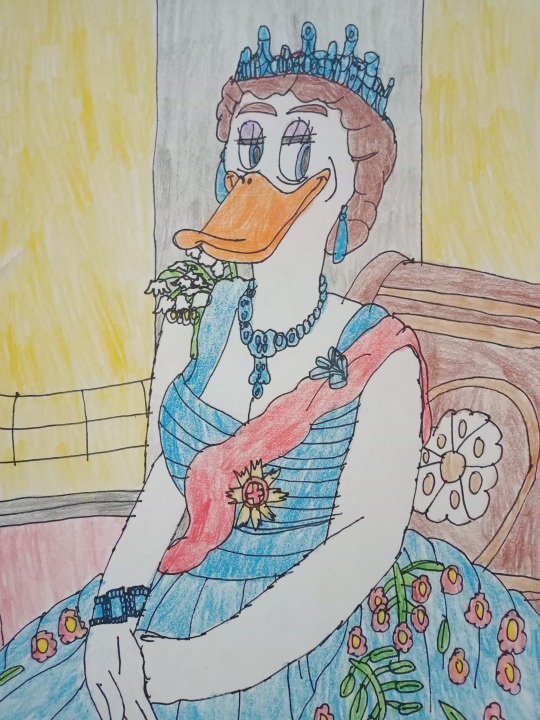
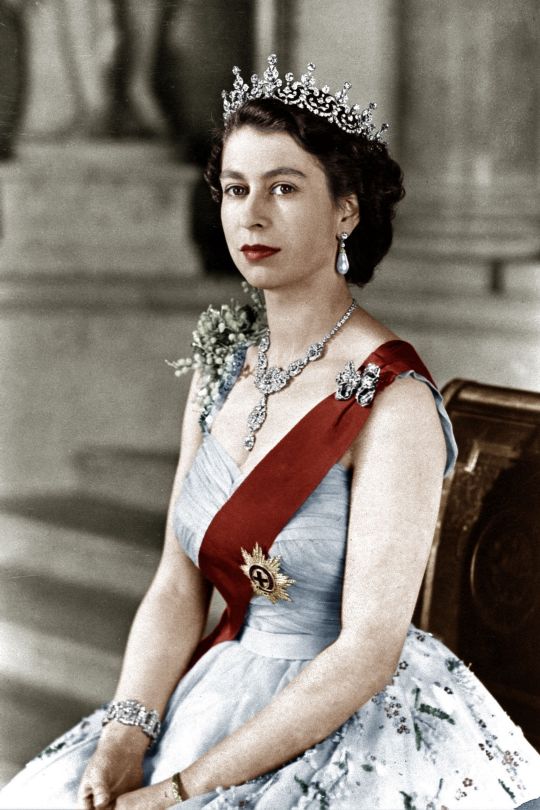
Portrait of Queen Elizabeth II in young days in Duckverse - Tribute to her (1926-2022)
Please, this is not a parody, but a tribute to the Royal Majesty of United Kingdom of Great Britain and Northern Ireland plus the British Commonwealth. Queen Elizabeth II when she was young woman and ascended the throne, but in Duckverse way. Sorry about this, but I haven't mastered portraits in human form yet, but I hope to learn. I thank you for your understanding.
Elizabeth Alexandra Mary as Elizabeth II born in 21 April 1926 in Royal Family called Windsor from father George VI and mother Margaret, Countess of Snowdon. She helped a lot as a driver during the Second World War and after the war she married in 1947 with Prince Philip, who is of Danish-Greek origin and became the Prince of Edinburgh. She became queen after her father's death and was crowned on June 2, 1953. She has four children with Philip, whose names are Charles, Anna, Andrew and Edward. She ruled Great Britain, Northern Ireland, as well as the British Commonwealth (Canada, Australia, New Zealand and other countries), and during her rule many former British colonies became independent. She experienced many changes while she ruled through various failures and successes of the United Kingdom and changed as many as 15 Prime Ministers of the United Kingdom and more than 170 Prime Ministers from the countries of the British Commonwealth.
Until now, she ruled for 70 years and managed to experience the Platinum Jubilee. She is on of the longest reingning monarchs of all time, as well as having reigned the longest of any English monarch in history. She visited almost all countries of the world, including communist countries, such as China and the former Yugoslavia. Howerer, although she contributed to the preservation of the British Kingdom, the British Empire saw its end. Also, unfortunately, numerous affairs took place at her court, starting with Charles' breakup with Princess Diana, Prince Andrew's affair, and the problems of her grandsons William and especially Harry. Not the mention the conspiracy theories surronding her and her court, but that's another story.
All in all, she preserved the reputation of her country and lived to a ripe old age. Her husband died in 2021, while she died on 8 September 2022 and was burried in Westminster Abbey in her father's chapel on 19 September.
After her, her son Charles will succeed as Charles III.
My opinion about her is irrelevant for now, but I certainly pay attention to her and let everyone who lives in England, Scotland, Wales, Northern Ireland and Commonwealth countries like Canada, Australia, New Zealand and other countries receive my condolences.
Yes, I drew her in duck anthropomorphic form, that is, in Duckverse, because I'm not sure what kind of animal she would be in Donald's universe, whether an eagle, an owl, a lioness or some other species, so I decided on a duck. Sorry about this. Yes, drew a redraw of her from her younger days.
Song about this: https://www.youtube.com/watch?v=o6ZvylOSy5A https://www.youtube.com/watch?v=A-MVosjKkr4
Rest in peace to the soul of the queen and eternal glory to her and thank you for everything and may God forgive your sins, your majesty! Amen.
#my fanart#queen elizabeth#queen elizabeth ii#elizabeth ii#tribute#duckverse#portrait#ducktales#fanart#1926-2022#redraw#my style#royal family#great britain#england#uk#united kingdom#windsor#dinasty windsor#scotland#wales#northern ireland#british commonwealth#canada#australia#new zealand#monarchy#sorry about this#rest in peace dear queen#amen
14 notes
·
View notes
Text

IMAGES: RAF Typhoons visit India and train with Su-30MKI and Rafale from IAF
Fernando Valduga By Fernando Valduga 10/26/22 - 20:30 in Military
Recently, Eurofighter Typhoon fighters of the Royal British Air Force (RAF) visited New Delhi, India and were able to fly alongside the Su-30MKI and Rafale jets of the Indian Air Force (IAF).
The Typhoon fighters were part of Squadron 6 of the Lossiemouth RAF Base in the United Kingdom. British aircraft visited India after a training exercise in Australia. On the way to India they were accompanied by a Voyager tanker plane (A330 MRTT) for refueling in flight.

The RAF also included an A400M transport aircraft to transport aircraft engineering personnel.
The visit was to perform joint exercises and exchange experiences and build interoperability, where the pilots had the opportunity to carry out joint missions with the Indian fighters Su-30MKI Flanker and Dassault Rafale EH from IAF.

Meanwhile, the RAF delegation also exchanged knowledge on the subject with the Defense Research and Development Organization of India (DRDO), where it was decided to create a new Joint Working Group on the Defense Industry (JWG) for more effective cooperation.
The inaugural meeting of the JWG was held on the sidelines of DefExpo 2022, held in Gandhinagar last week.
The JWG is part of an ongoing initiative between the two countries to strengthen defense and security partnerships through industrial collaboration.

The United Kingdom recently issued its first General Open Export License (OGEL) in the Indo-Pacific region to India, reducing delivery times for defense purchases.
Tags: Military AviationDassault RafaleEurofighter TyphoonIAF - Indian Air Force/Indian Air ForceRAF - Royal Air Force/Royal Air ForceSukhoi Su-30MKI Flanker
Previous news
Air Canada orders another 15 A220 for a total of 60 aircraft
Next news
IMAGES: The world's first large 4-motor drone makes inaugural flight in China
Fernando Valduga
Fernando Valduga
Aviation photographer and pilot since 1992, he has participated in several events and air operations, such as Cruzex, AirVenture, Dayton Airshow and FIDAE. It has works published in specialized aviation magazines in Brazil and abroad. Uses Canon equipment during his photographic work in the world of aviation.
Related news
MILITARY
Lockheed Martin releases new conceptual images of NGAD
27/10/2022 - 18:07
MILITARY
B-52 bombers will receive APUs for fast start of their engines
27/10/2022 - 14:39
VIDEOS
Amazing videos show Ukrainian military helicopters flying low over highways
27/10/2022 - 12:00
RAAF's first C-27J Spartan.
MILITARY
Australia will modernize the avians of its C-27J Spartans
27/10/2022 - 09:10
EMBRAER
Embraer signs agreements to cooperate with South Korea's aerospace industry
27/10/2022 - 08:31
MILITARY
U.S. Border Patrol buys more than $1 million in drones
27/10/2022 - 06:00
home Main Page Editorials INFORMATION events Cooperate Specialities advertise about
Cavok Brazil - Digital Tchê Web Creation
Commercial
Executive
Helicopters
HISTORY
Military
Brazilian Air Force
Space
Specialities
Cavok Brazil - Digital Tchê Web Creation
6 notes
·
View notes
Text
Gerald Hannon, a key figure in the gay liberation movement, has died at age 77
Friends and colleagues recall one of Canada’s most infamous journalists and longtime board member of Xtra’s publisher
Canadian queers owe a lot to the legacy of Gerald Hannon, one of the key contributors to The Body Politic, a groundbreaking homo magazine of the early 1970s. Hannon, who had Parkinson's disease, died by assisted suicide on May 9, 2022. Xtra gathered up recollections from close friends and published them here. Below is one of these entries:
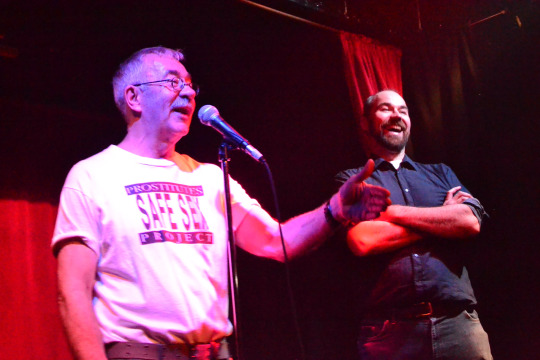
“After a swanky dinner, Herbie pulled out his dick and slapped it on the table”
It is hard to imagine how my life would have turned out differently had I not met Gerald Hannon. He opened not only the world of gay people to me, but also opera. Gerald was my first boyfriend; at the time he was the most famous homosexual in Canada, and even still today is the only person I have ever met who actually saw Sputnik.
Gerald and I met in 1982, at a party at Michael Lynch’s house, where I was James Fraser’s date. This was the pre-AIDS era where at parties The Body Politic people would nod and seriously opine, “Promiscuity really is the glue that holds the gay community together.” I said “Oh, who is that, he’s cute.” James then introduced me to Gerald. It turned out I really liked Gerald. In fact, he was quite fun.
At the beginning I was still in architect school; things were tight, but he wasn’t any wealthier—full-time at Pink Triangle Press was paying $8K/year—so, it worked. Gerald, who was once slightly frightened by the Royal York Hotel—emerging from Union Station the first time, it was the biggest thing he had ever seen—got a crash course in architecture, and I, a crash course in the wonders of being gay, by masters of the craft, his circle of friends, most of whom were somehow connected to The Body Politic.
One time, Gerald and I went to New York City for a long weekend. We stayed with his friend Herb Spiers, who lived in a loft near Gramercy Park. He had the whole second floor of an old commercial building that his boyfriend Ray Gray had purchased for a song when New York almost went bankrupt in the mid-1970s. Ray’s space was the whole top floor of the building (and the roof), which we visited using a tiny elevator that only stopped at two and seven. It was crazy awesome, also exactly what you would want.
Ray was an interior designer from Hollywood, California. Handsome. His loft, fully marbleized, was adorned with big Babylonian movie flats and large paintings. After a swanky dinner, Herbie pulled out his dick and slapped it on the table; it was his way of saying it was time to go to the Saint, an unbelievably fabulous private gay club inserted into an old theatre. For a brief moment there, I got a glimpse of the A-list New York gay life I had only ever read about, or heard about from Gerald, in what would turn out to be the last moments before it all went bad. Ray would be dead in a year.
Gerald took me to the Anvil, the Everard, the St. Mark’s, the Mineshaft. He thought I should see these places, so many stories were attached to them. But also he took me to a party at the home of the writer Jonathan Katz, where we both met the gay hero Harry Hay, founder of the Mattachine Society, the first gay rights organization. Both publicly and later privately, Harry was generous with praise for Gerald’s writing and activism; that is where I really got the sense of the importance of Gerald. Without Gerald, not just our city, but all Canada, would have been less free. He opened up the law, throat-rammed it until it hurt, turned himself into the Antichrist in the eyes of some, while carving out a larger space in our society for LGBTQ folk, who were always there anyways (also the whores). If they knew Gerald as I do, they would know his gentle kindness, his passion, his humour and love. Being with him makes me happy and I will miss him so.
— Chris Lea served as the first openly gay leader of a Canadian political party (Green Party of Canada) and was on the board of the Toronto City Opera with Gerald Hannon
Read the entire article at Xtra
12 notes
·
View notes